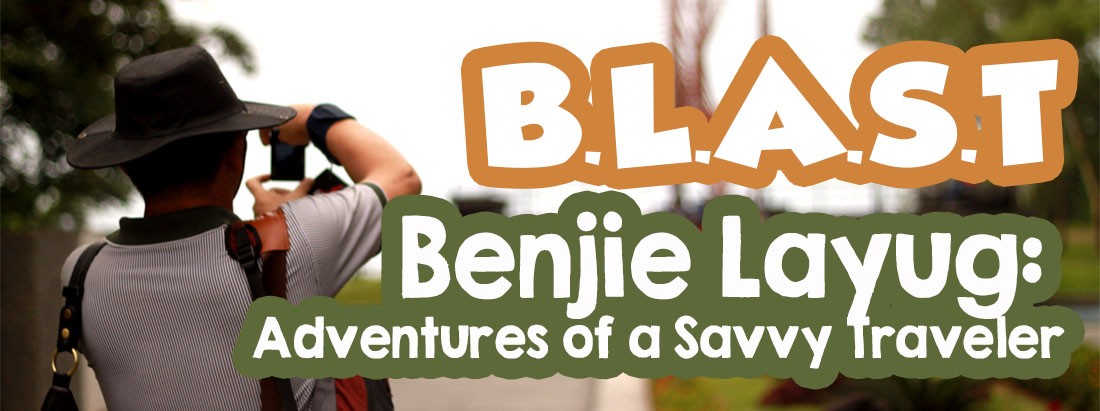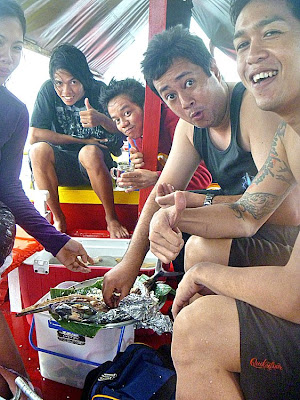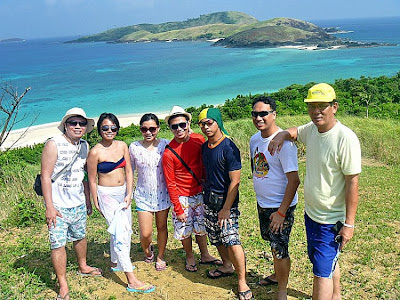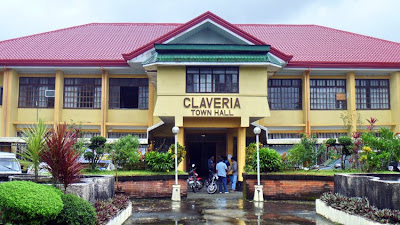 |
| Cagbalete Island |
Come morning and after breakfast at the Mayor’s house, Bernard and I decided to do some more sightseeing. Omar, Baby and Dax left earlier to cover the unveiling of the historical marker at Rizal Hill Park. To burn some of our excess calories, we visited, on foot, a number of the town’s old ancestral houses (Alquiros Residence, Quintana Residence, Pansacola Residence and Taino Residence) and the monument to native son Fr. Horacio V. de la Costa. By 10 AM, all of us met up at the municipal hall as we were slated to go on a day tour of the 1,640.48 sq. km. Cagbalete Island, one of Mauban’s top tourist draws.
 |
| Taino Ancestral House |
We boarded to tricycles to get to the port at Brgy. Daungan as we were hoping to still catch the morning trip (10 AM) to the island and leave the island on the afternoon boat (1:30 PM). At the port, we were met by Mr. Romano “Roman” Balatbat, the former barangay captain of Brgy. Cagbalete 1 (now headed by his wife), one of the island’s 2 barangays (the other being Cagbalete 2). Mang Roman is a Visayan migrant to the island, just like most of the island’s inhabitants. Our huge motorized outrigger boat left the port by 10:45 AM and the 6 km. trip took all of 45 mins.. Along the way, we passed the the 440 MW, coal-powered Quezon Power Project. Built in 2000, it is the first privately built, owned, and operated power generating facility in the Philippines.
 |
| Quezon Power Project |
We were within sight of the island’s beach by 11:30 AM but we had to transfer to a smaller, flat-bottomed boat to get to shore as we were anchored some distance away, it being low tide. Just the same, I had to raise my pant legs and remove my shoes and socks to wade ashore. Mang Roman first invited us to his house where a simple but filling lunch of fried chicken, fish and soft drinks was prepared for us. After lunch, we walked along the barangay’s narrow pathways and, after that, the beach itself to get to the island’s other side where the island’s white sand beaches are less populated and at their most beautiful.
 |
| Cagbalete Beach |
Naturally, there were a number of resorts located along this beautiful stretch of white sand and we spent a substantial amount of time at the quaint Pansacola Beach Resort. The resort has rustic fan-cooled, 8-10-pax nipa huts with common toilets and bath (rented for PhP2,000) and 12-20-pax houses with private toilets and bath (rented for PhP4,000). Open beach huts are rented for PhP1,000. Other resorts located on the island, all in Brgy. Cagbalete 1, include Little Prince, MVT Sto. Nino and Villa Cleofas, said to be the best on the island.
 |
| Pansacola Beach Resort |
Our enchantment with the beautiful beach, where we did some “leaping” photo ops, made us forget about the time and, realizing this, we soon thanked the resort caretaker and quickened our pace to make it back to the landing area. Too late. We were still some distance away when we espied our boat already leaving the beach and us for that matter. Luckily for us, there were still other, smaller motorized boats around, the barangay being a fishing community, and Mang Roman made arrangements for a boat to bring us back to the port. The trip back took a little longer, it being a smaller boat, and there was to be no roof to shade us from the hot afternoon sun. Still, we were thankful that we made it back to town as we had to depart for Manila in the late afternoon.
 |
| The Public Bath |
Back at the port, we thanked our gracious host and savior Mang Roman and met up with his wife (now barangay captain of Cagbalete 1). Then, we returned to the municipal hall to inform the Tourism Office of our safe arrival. Later, we left it laden with bottles of nipanog wine, parting gifts courtesy of Mayor Llamas. Before leaving the town, we visited the parents of Lee at their Mauban home (and again left it laden with additional 4-gallon bottles filled with nipanog wine for us and Lee) and the town’s Public Baths at the end of San Buenaventura St. (cor. Mabini St.), between Brgys. Daungan and Mabato. Built in 1725 by Kapitan Luis de la Cruz, it has 2 compartments, boys on the left and girls on the right. The baths used to be supplied with overflow water from the town’s reservoir. Now they’re dry. Mauban is the only municipality in the country to have such a structure.































